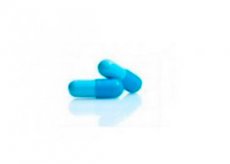Medical expert of the article
New publications
Preparations
Fibrinase
Last reviewed: 04.07.2025

All iLive content is medically reviewed or fact checked to ensure as much factual accuracy as possible.
We have strict sourcing guidelines and only link to reputable media sites, academic research institutions and, whenever possible, medically peer reviewed studies. Note that the numbers in parentheses ([1], [2], etc.) are clickable links to these studies.
If you feel that any of our content is inaccurate, out-of-date, or otherwise questionable, please select it and press Ctrl + Enter.

Fibrinase is a medication that is commonly used in cases of musculoskeletal dysfunction.
The active element of the medicine is the substance serratiopeptidase, a proteolytic enzyme obtained from a non-pathogenic intestinal microbe – Serratia type E15. This component has intense anti-inflammatory, fibrinolytic and anti-edematous properties. It significantly reduces pain by blocking the processes of releasing pain amines located inside inflamed tissues.
Indications Fibrinase
It is used in the following situations:
- diseases of a surgical nature - ligament ruptures or sprains, dislocations with fractures, as well as swelling after plastic surgery;
- pathologies affecting the respiratory organs - liquefaction of sputum with subsequent facilitation of its secretion from the respiratory tract;
- diseases associated with ENT organs – facilitating the process of removing secretions from the paranasal sinuses;
- epidermal lesions – inflammatory dermatoses in the active phase;
- pathologies affecting the mammary glands and female genitalia – congestion and hematomas in the mammary glands.
Release form
The element is released in tablets - 10 pieces inside a cell plate. In a box - 1, 3 or 10 plates.
 [ 3 ]
[ 3 ]
Pharmacodynamics
Serratiopeptidase directly reduces capillary dilation and regulates capillary permeability - by hydrolyzing histamine with bradykinin and serotonin. At the same time, the drug blocks substances that slow down the activity of plasmin, resulting in a fibrinolytic effect. Serratiopeptidase helps reduce the levels of inflammatory conductors of polypeptide origin (bradykinin) and fibrin inside a chronic inflammatory focus, but does not have a significant effect on living proteins (for example, albumins with α- and γ-globulins).
The enzymatic activity of the active element is ten times higher than the indicators of α-chymotrypsin. The medicine easily penetrates into inflamed areas, lyses dead tissues with their metabolic elements, reduces hyperemia, and at the same time increases the speed of activity and penetration of antibiotics.
Proteolysis of structural proteins within the sputum allows the enzyme to improve its rheological properties and aid in its removal.
In addition, serratiopeptidase reduces the viscosity of nasal secretions and saliva, making them easier to remove.
 [ 4 ]
[ 4 ]
Pharmacokinetics
When taken orally, the drug is absorbed unchanged in the intestine. It is not inactivated by gastric juice and penetrates the circulatory system in an enzymatically active form. Plasma Cmax values are noted after 1 hour.
Synthesis occurs with blood α-2-macroglobulins in a 1:1 ratio. This process masks the enzymatic antigenicity, while maintaining enzymatic activity. It is not subject to metabolic processes.
Excretion of the active component occurs with bile and, in small volumes, through the kidneys.
Dosing and administration
The medicine is used in adults - orally in a portion of 10-20 mg after eating. A maximum of 30 mg of the substance is allowed per day. The tablets are swallowed without chewing, while washing down with plain water (1 glass).
The duration of the therapy cycle and the dosage of Fibrinase are selected individually, taking into account the dynamics of the disease and its nature.
Contraindications
Among the contraindications:
- severe intolerance to the active component or other elements of the drug;
- disorder of blood clotting function.
 [ 11 ]
[ 11 ]
Side effects Fibrinase
Main side effects:
- lesions of the respiratory organs, mediastinum and sternum: discharge of bloody sputum, nosebleeds, eosinophilic pneumonia in the acute phase;
- problems with digestive function: vomiting, anorexia, diarrhea, discomfort in the epigastric region and nausea;
- immune disorders and lesions of the subcutaneous layers and epidermis: signs of intolerance, including itching, rashes and hyperemia.
Interactions with other drugs
Storage conditions
Fibrinase should be stored in a place closed to small children. Temperature indicators - no higher than 25°C.
Shelf life
Fibrinase can be used within a 2-year period from the date of release of the therapeutic substance.
Attention!
To simplify the perception of information, this instruction for use of the drug "Fibrinase" translated and presented in a special form on the basis of the official instructions for medical use of the drug. Before use read the annotation that came directly to medicines.
Description provided for informational purposes and is not a guide to self-healing. The need for this drug, the purpose of the treatment regimen, methods and dose of the drug is determined solely by the attending physician. Self-medication is dangerous for your health.

